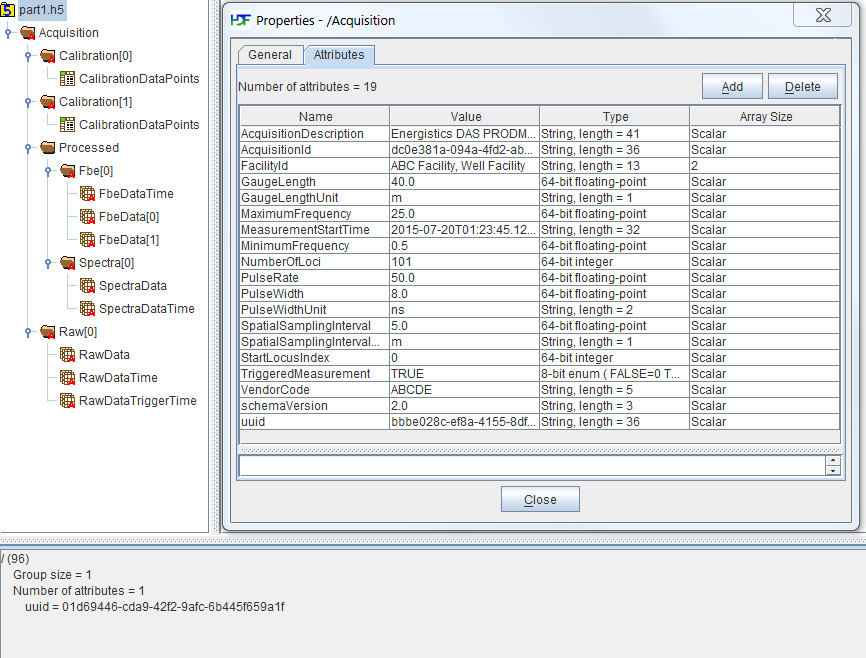20.6.1 DAS Acquisition
| Topic Version | 2 | Published | 04/16/2018 | |
| For Standard | PRODML v2.0 | |||
The DAS Acquisition data object specifies the key instrument attributes for the full DAS acquisition including InstrumentBox and VendorFormat, MaximumFrequency, MinimumFrequency, PulseRate, PulseWidth, GaugeLength and the SpatialSampling interval along the fiber.
- The PulseRate is the number of pulses sent into the fiber per second.
- The GaugeLength is the distance between a pair of pulses used in a dual-pulse or multi-pulse system.
- For each pulse, the backscatter is sampled along the fiber (by an AD converter that samples at a much higher rate than the PulseRate). The OpticalPath points to a metadata object that describes the (fiber) path along which the light pulses travel.
The StartLocusIndex is the first location (locus) along the fiber at which a recording is made. The distance between the recorded loci (locuses) is determined by the SpatialSamplingInterval. The number of samples made from and including the first locus is stored in the NumberOfLoci record. Figure 20.6.1-1 shows the concept.
Figure 20.6.1-1 also shows the metadata attributes for the example file. Some of the main attributes are explained here.
The DAS acquisition job name is indicated by the Title attribute. Further the Originator can be indicated.
The location of a locus on the fiber can be estimated by multiplying the locus number times the SpatialSampingInterval. The index of the first locus is 0 and hence locus 0 has a distance of 0. The first locus presents the measurement taken over first spatial sampling interval which starts at the DAS instrument connector/splice (fiber distance 0) and has a length of (fiber distance) SpatialSamplingInterval. Note that this is always an estimate because the fiber refractive index may vary slightly along fiber or vary more if the optical path consists of fibers with different refractive index values are spliced together. In addition, splices or certain optical components may cause delays, which must be corrected for by the end user in a distance through a calibration exercise.
